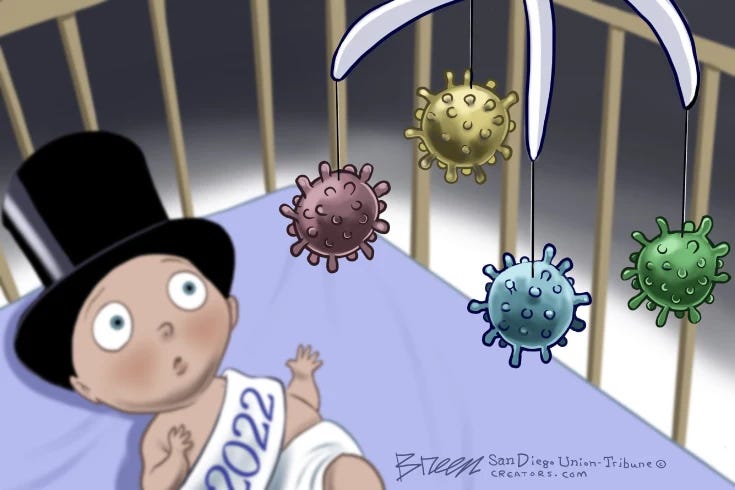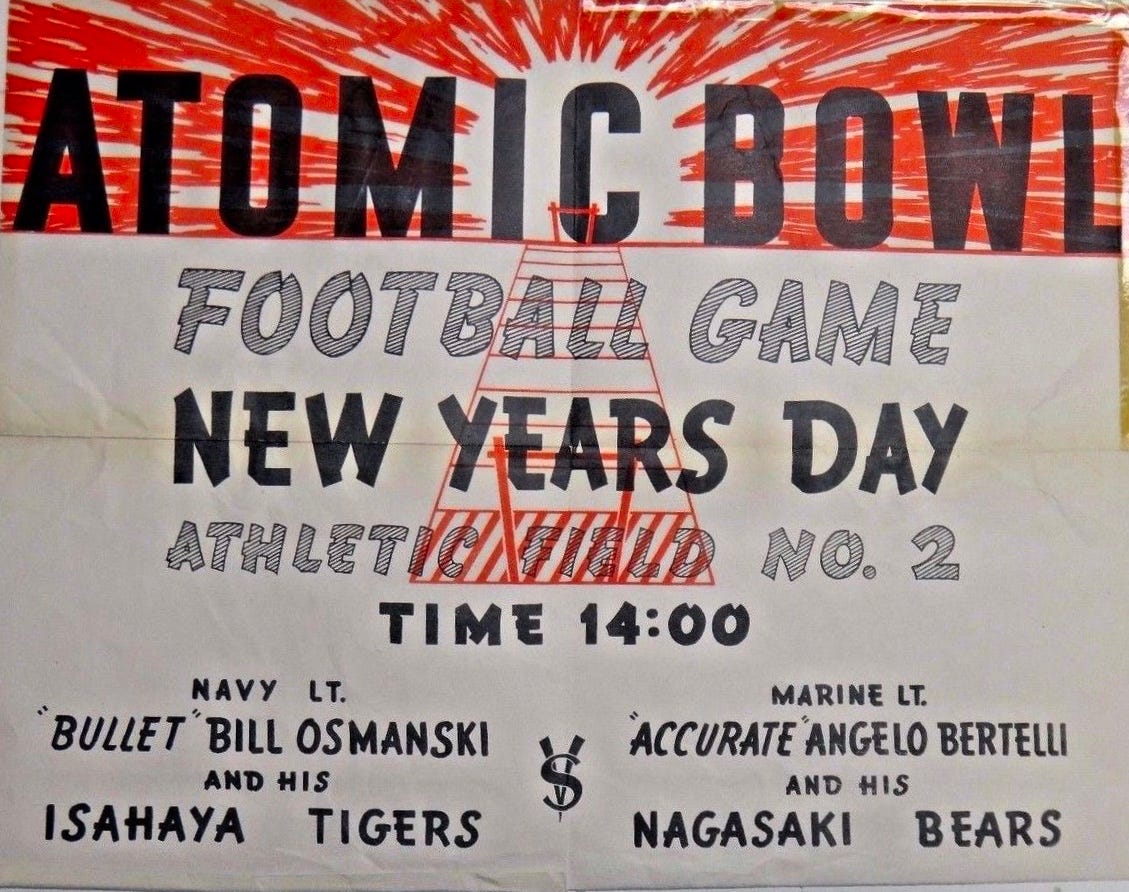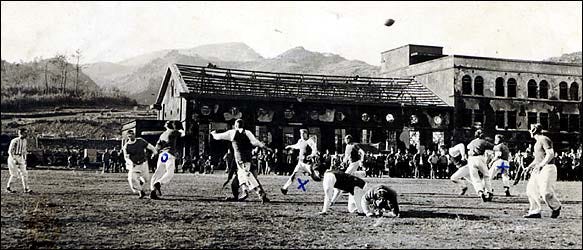The Most Amazing New Year's 'Bowl Game' Ever
On a killing field, in Nagasaki. Plus, music from songwriting giants who died on this day: Hank Williams and Townes Van Zandt.
Below you will find my annual posting (always somewhat revised) on the Atomic Bowl, featuring pro and college stars, played in Nagasaki less than five months after our A-bomb killed tens of thousands on that site and nearby. Plus music from the tragic Hank and Townes, who each perished on a January 1. First the usual political cartoons. Subscribe, somehow it’s still free.
The Atomic Bowl, January 1, 1946
The famed biologist Jacob Bronowski revealed in 1964 that his classic study Science and Human Values was born at the moment he arrived in Nagasaki in November 1945, three months after the atomic bombing (which killed at least 75,000 civilians) with a British military mission sent to study the effects of the new weapon. Arriving by jeep after dark, he found a landscape as desolate as the craters of the moon. That moment, he wrote, “is present to me as I write, as vividly as when I lived it.” It was “a universal moment…civilization face to face with its own implications.” The power of science to produce good or evil had troubled other societies. “Nothing happened in 1945,” he observed, “except that we changed the scale of our indifference to man….“
One of the most bizarre episodes in the entire occupation of Japan took place less than two months later, on January 1, 1946, in Nagasaki. (For more on this critical period, and my own experiences in Nagasaki, see my book Atomic Cover-up or my 2021 film of the same name.) Back in the States, the Rose Bowl and other major college football bowl games, with the Great War over, were played as usual on New Year’s Day. To mark the day in Japan, and raise morale (at least for the Americans), two Marine divisions faced off in the so-called Atom Bowl, played on a killing field in Nagasaki that had been cleared of debris.
It had been “carved out of dust and rubble,” as one wire service report put it--without mentioning that it was the former site of a high school where hundreds of students perished on August 9--and was soon dubbed "Atomic Athletic Field No. 2."
Both teams had enlisted former college or pro stars serving in Japan for their squads. The “Bears” were led by quarterback Angelo Bertelli of Notre Dame, who won the Heisman Trophy in 1943, while the “Tigers” featured Bullet Bill Osmanski of the Chicago Bears, who topped pro football in rushing in 1939 (and then became a Navy dentist). Marines fashioned goal posts and bleachers out of scrap wood that had been blasted by the A-bomb. Nature helped provide more of a feel of America back home, as the day turned unusually chilly for Nagasaki and snow swirled.
A band played the fight song, “On Wisconsin!” The rules were changed from tackle to two-hand touch because of all the irradiated glass shards from the atomic blast remaining on the turf. A referee watched for infractions. Each quarter lasted ten minutes.
Press reports the next day claimed Japanese locals observed the game—from the shells of blasted-out buildings nearby. The two stars, Bertelli and Osmanski, had agreed to end the game in a tie so that both sides would be happy but Osmanski, after leading a second-half comeback, could not resist kicking the extra point that gave his team the win, 14-13. A commemorative booklet produced for the game included this line: "In the rubble of the atomic bomb, we made a gridiron.”
When the servicemen returned to the US, many of them suffered from strange rashes and sores. Years later some were afflicted with disease (such as thyroid problems and leukemia) or cancer (such as multiple myeloma or forms of lymphoma) associated with radiation exposure.
The Late Greats
Two of the greatest (and most self-destructive) songwriters to ever live passed away on New Year’s Day forty-four years apart. I could only be speaking of Hank Williams and Townes Van Zandt. Here’s one of the best song tributes to Hank, by Emmylou Harris, and then Hank and Townes themselves.
“Essential daily newsletter.” — Charles P. Pierce, Esquire
“Incisive and enjoyable every day.” — Ron Brownstein, The Atlantic
“Always worth reading.” — Frank Rich, New York magazine, Veep and Succession
Greg Mitchell is the author of a dozen books, including the bestseller The Tunnels (on escapes under the Berlin Wall), the current The Beginning or the End (on MGM’s wild atomic bomb movie), and The Campaign of the Century (on Upton Sinclair’s left-wing race for governor of California), which was recently picked by the Wall St. Journal as one of five greatest books ever about an election. His new film, Atomic Cover-up, just had its world premiere and is drawing extraordinary acclaim. For nearly all of the 1970s he was the #2 editor at the legendary Crawdaddy. Later he served as longtime editor of Editor & Publisher magazine. He recently co-produced a film about Beethoven’s Ninth Symphony.








Graeme Edge - never comes the day
Beans and biscuits, truth recruits us.